Expo / Global
Remote working
In the planet’s most isolated and sparsely populated settlements, a trusted community newspaper can serve as a common bond. Behind these bulletins are dedicated journalists with a passion for publishing and a pride in their parish. Here we step off the beaten path to find out how they write the headlines at newsrooms in the back of beyond.

1.
‘Malheur Enterprise’
Oregon, USA
Editor: Les Zaitz
Journalists: Three
Founded: 1909
Cover price: $1 (€0.80)
Circulation: 2,400
Frequency: Weekly
Headquarters: Vale
The Oregon Trail once passed through Vale, a town where 150-year-old wagon ruts are etched into the sagebrush val- leys. For emigrants heading west, this stretch was an inhos- pitable desert on the way to the verdant farmland of western Oregon. But Les Zaitz, a two-time Pulitzer-nominated investigative journalist, views it differently. From his ranch in Eastern Oregon, he worked on the state’s largest paper, Portland-based The Oregonian, until he retired and bought the county’s storied but struggling newspaper, the Malheur Enterprise, in 2015.
“I’m enough of a believer in regional journalism that I couldn’t stomach the idea of a community losing a publi- cation that had been around for 100 years,” he says. Since Zaitz took over the Enterprise, the paper has reinvigorated news coverage for the 32,000 souls who inhabit onion- farming, cattle-ranching Malheur County. Zaitz’s own ranching experience helped to convince a community that was sceptical of outsiders. “I know the difference between a cinch and a stirrup,” he says. “I could talk their language.”


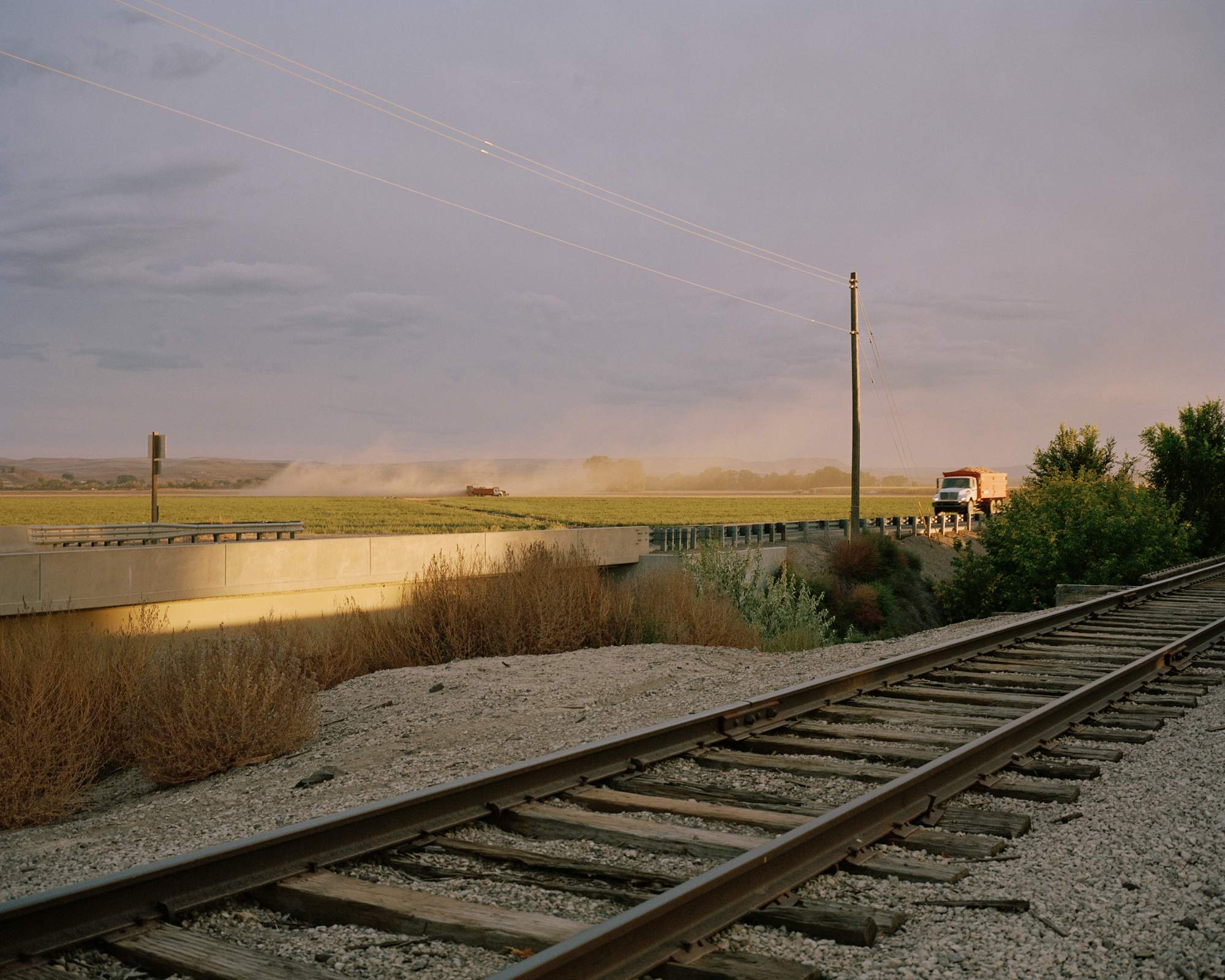
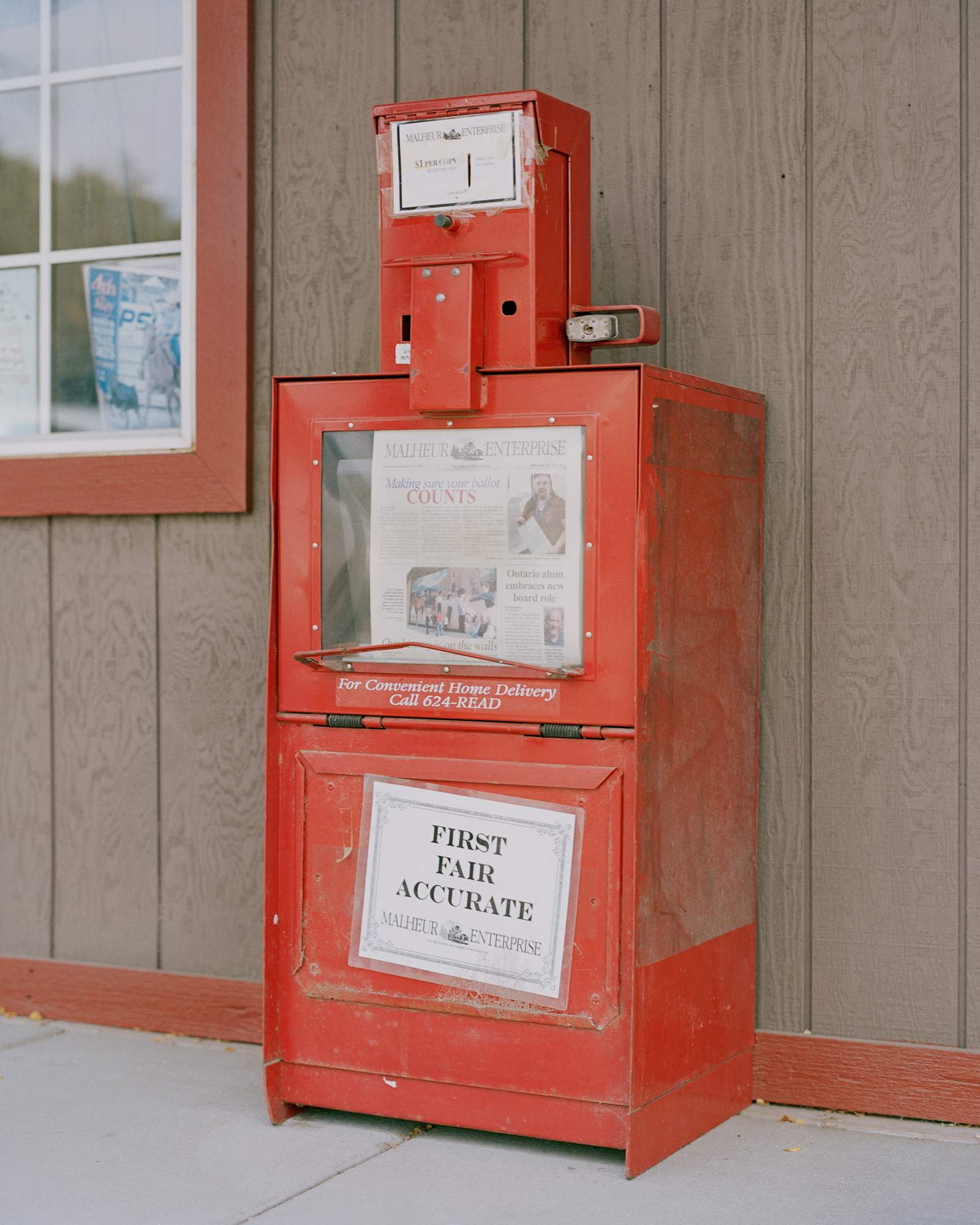
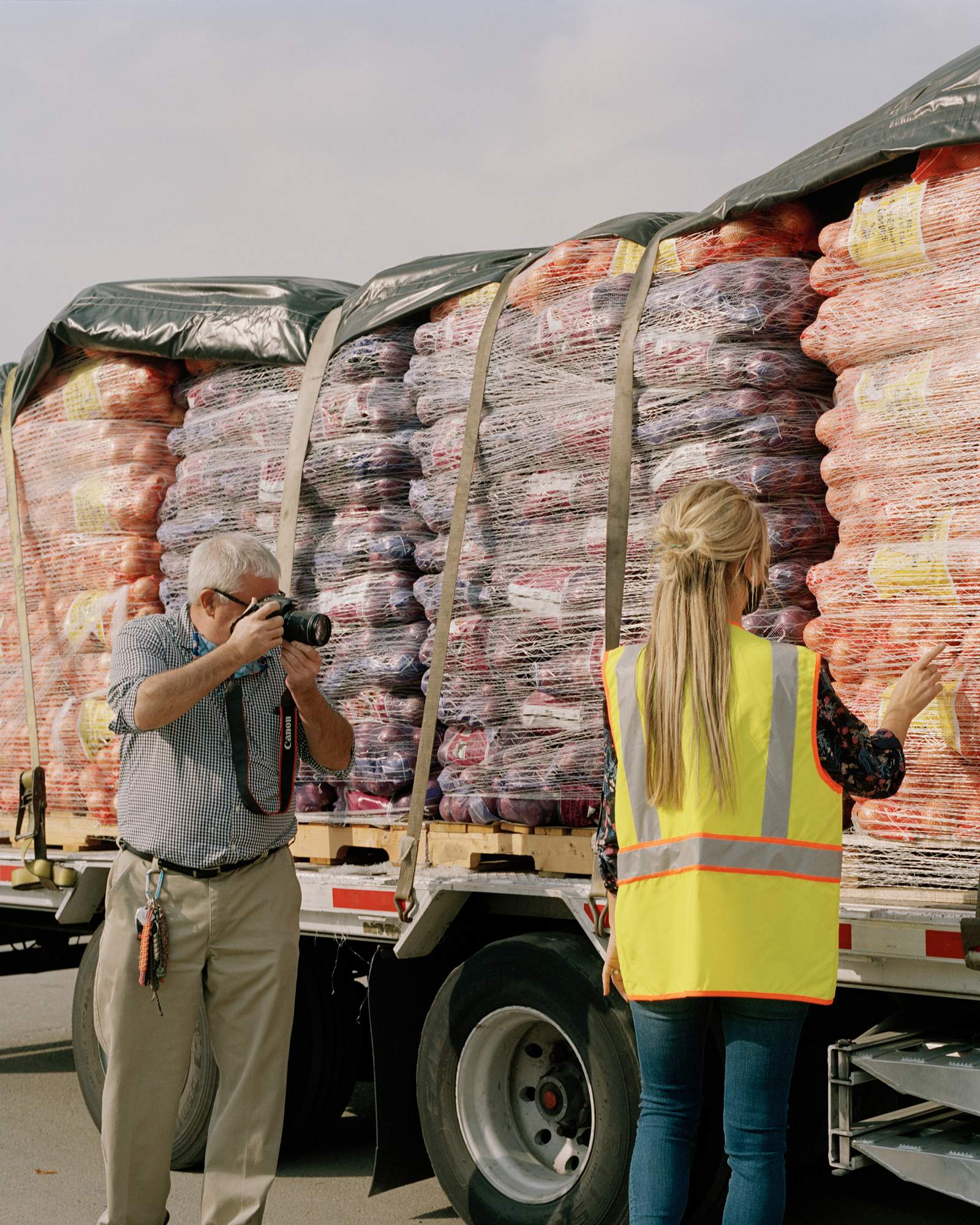
The weekly Enterprise has 1,000 mail subscribers and sells another 200 copies a week on newsstands. The paper’s print editions offer the in-depth investigative reporting Zaitz is known for, such as its exposé of the county’s finan- cial malfeasance, while the paper has made its presence felt online through breaking news. Its two reporters, buttressed by a robust summer intern programme, learn from the best. Zaitz imparts wisdom from his 40-year career through seminars on interviewing techniques, beat management, sources and ethics in journalism. It’s the kind of hands-on instruction that is a rarity today. “Editors don’t really have time to be mentors any more,” he says.

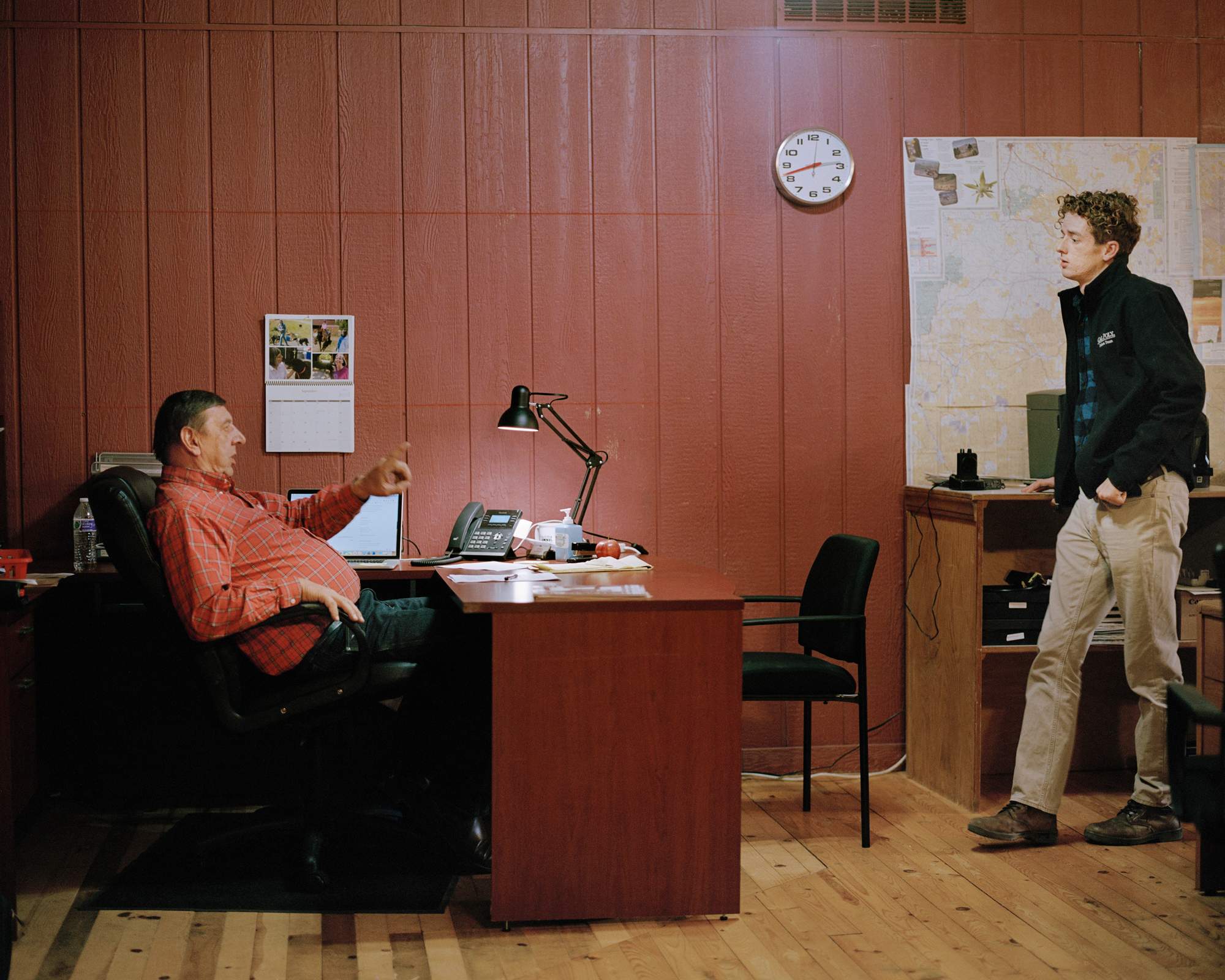

Senior reporter Pat Caldwell is a staunch believer that his outlet is as qualified as any metropolitan publication. “We go right down to the molecular level of reporting,” he says. “We’re doing NewYork Times-quality work for a rural county in the middle of nowhere.” But as any journalist knows, good reporting isn’t without its challenges. In 2018 a state agency sued the paper over a public-records request made during its investigation into a mental-health scandal. Last year county officials asked that the paper be inves- tigated for criminal harassment as it sniffed around the economic development office. Both efforts backfired when they yielded the paper sympathetic national headlines.
Solidarity notes from around the country are tacked onto a wall in the modest office, a former ice-cream parlour with vintage wallpaper and creaky hardwood floors. Even as large newsrooms continue to operate remotely during the pandemic, the Enterprise reopened to staff as soon as was permitted. “For the chemistry of producing the news, reporters spark off each other, share ideas, ask each other what they’re working on,” says Zaitz. “An active newsroom is part of the mix of making the news. I consider us a gath- ering place in a rural, remote area with no local radio or TV. We have a responsibility to be a mirror for the commu- nity about what’s going on in this vast geography.”
Splendid isolation
Big news has never been far away in 2020: a strange new pathogen, wildfires, nations in lockdown and election coverage reaching fever pitch. It’s heady stuff, which makes it easy to forget the little stories that continue to tick over all across the world. But the local beat is something that small-town editors never forget. Every week in “Outpost News”, published on Saturdays in the Monocle Weekend Edition email newsletter, we interview the journalists whose work on publications in remote communities might otherwise go unnoticed. We’ve dialled up newsrooms based everywhere from tiny Pacific islands to Alaskan towns with no road access. Here we spotlight some of the newspapers that we’ve had the pleasure to report on. For a weekly instalment, sign up to the Monocle Weekend Edition at monocle.com/minute.
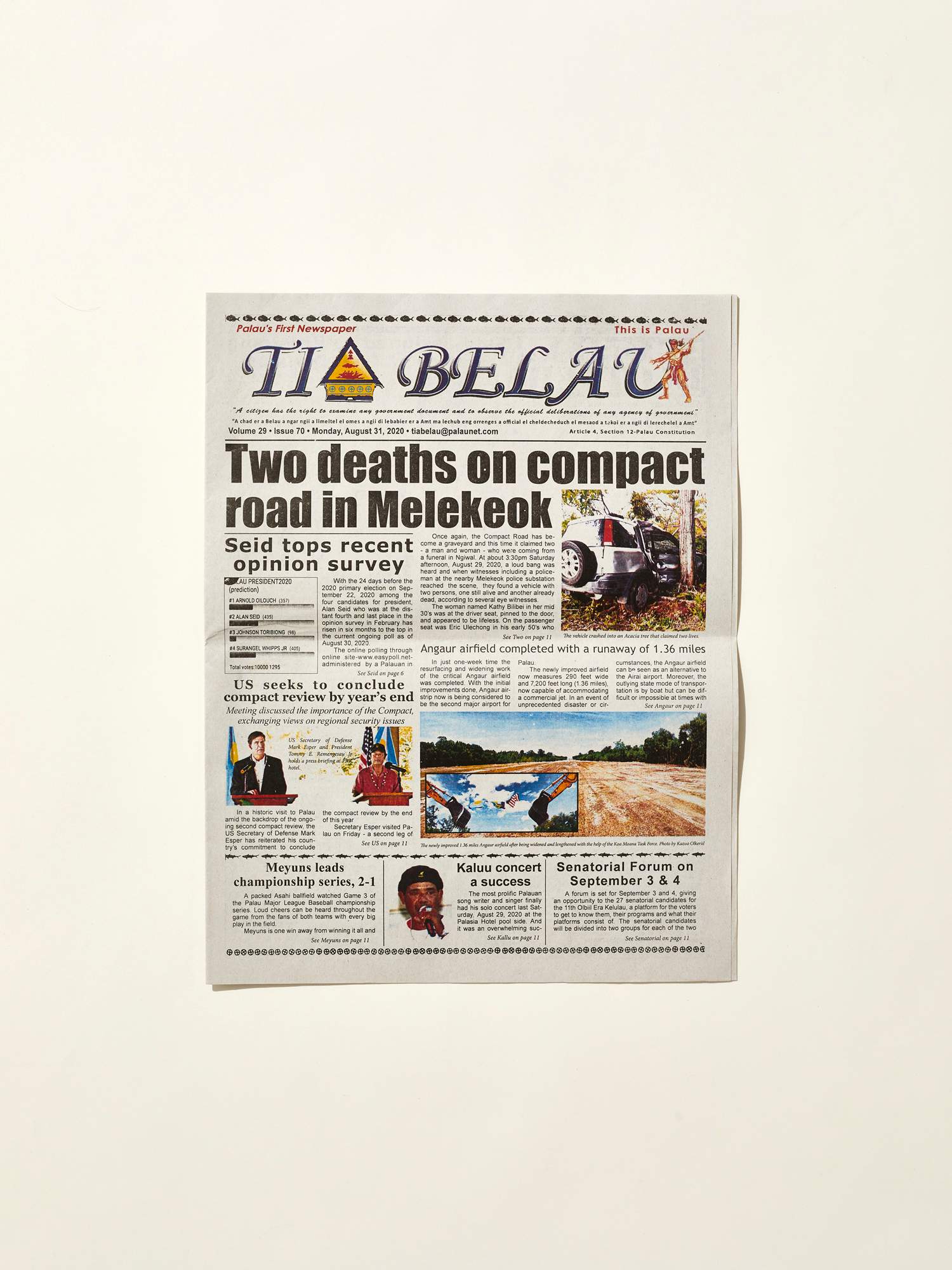
‘Tia Belau’
Comprising some 350 islands and about 20,000 souls, the West Pacific island nation of Palau has two newspapers. Tia Belau, with a circulation of 1,000, was established in 1973 as the first. Leading an editorial team of three, Ongerung Kambes Kesolei is editor of the weekly newssheet.
Fact: Ngerulmud, the site of Palau’s capital, is located in the state of Melekeok, home to a mere 300 or so people.

‘El Magallanes’
The Sunday paper serving Punta Arenas – the capital of Chile’s Antarctic region, deep in Patagonia – El Magallanes is produced by a team of four full-time journalists led by editor Elia Simeone Ruiz. Founded in 1894, the newssheet is the fifth oldest in Chile and today distributes 6,500 copies every week.
Fact: Punta Arenas, Chile’s southernmost city, is the central hub for expeditions to the Antarctic.

‘Iki Shinpou’
A small, rural island on the Tsushima Strait, Iki has been inhabited for thousands of years. Its weekly paper, Iki Shinpou, can only claim about 100 years of pedigree but a circulation of 2,600 among 26,000 islanders attests to its significance. Its editor, Eiji Ono, shares reporting duties with one other journalist.
Fact: Iki, off the coast of Nagasaki, has long served as an entry point for Chinese and Korean culture to Japan.
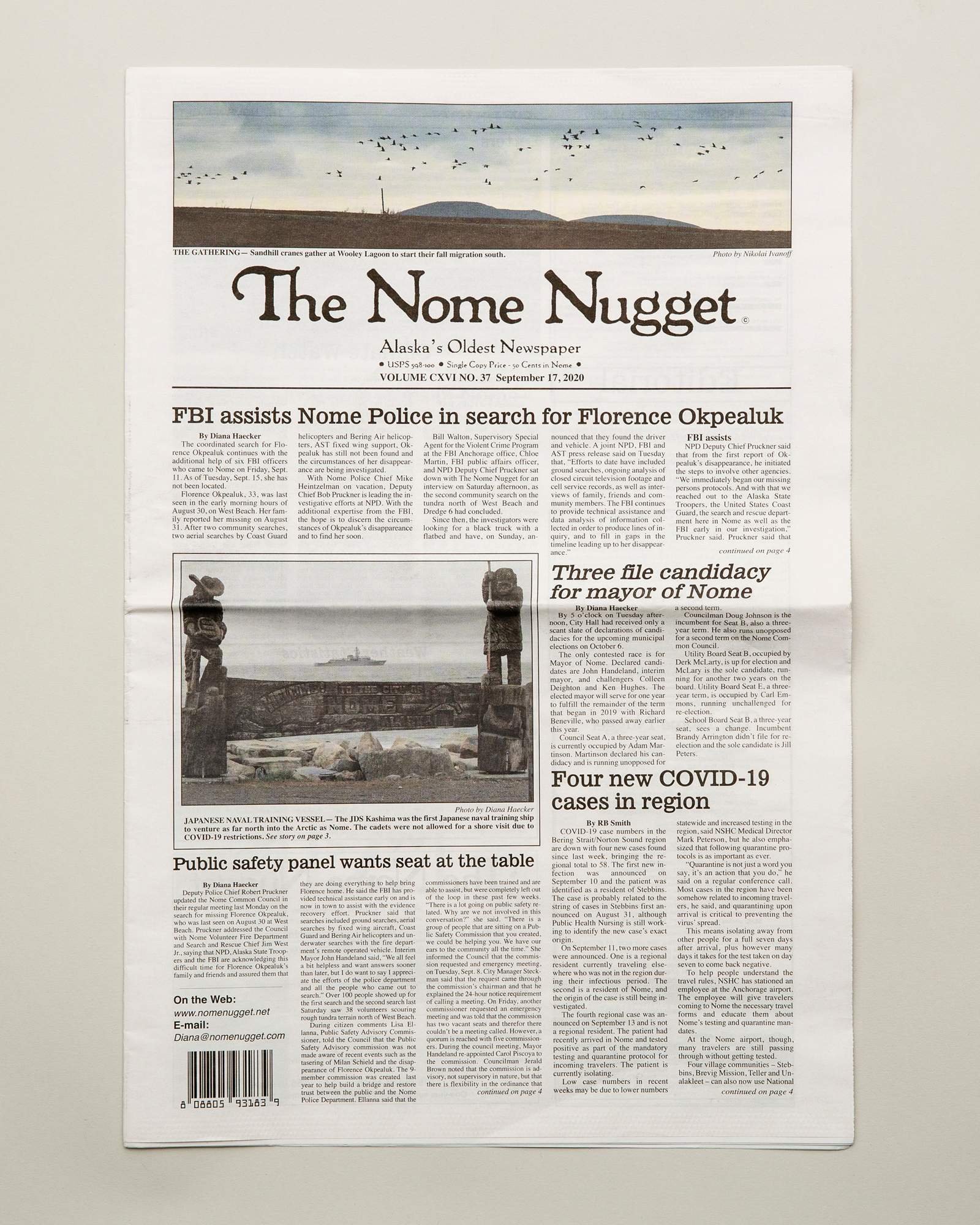
‘The Nome Nugget’
Alaska’s oldest newspaper, founded in 1899, the Nugget is published in Nome, a town of fewer than 4,000 that’s only accessible over land by snowmobile or dogsled. German-born husband-and- wife team Diana Haecker and Nils Hahn run the paper with three other journalists, printing 3,000 copies every week.
Fact: Haecker and Hahn also run Nome-based sled dog magazine, ‘Mushing’

‘The Sentinel’
Emma Weaver’s mother was born in St Helena, a British overseas territory in the middle of the South Atlantic (population: 4,000). Weaver left the US, where she was born, with the intention of visiting the remote island for a brief spell. But she ended up saving the St Helena Sentinel from liquidation in 2017 and has been editing the weekly paper ever since.
Fact: Napoleon Bonaparte died and was buried in St Helena, 7,000km from France.
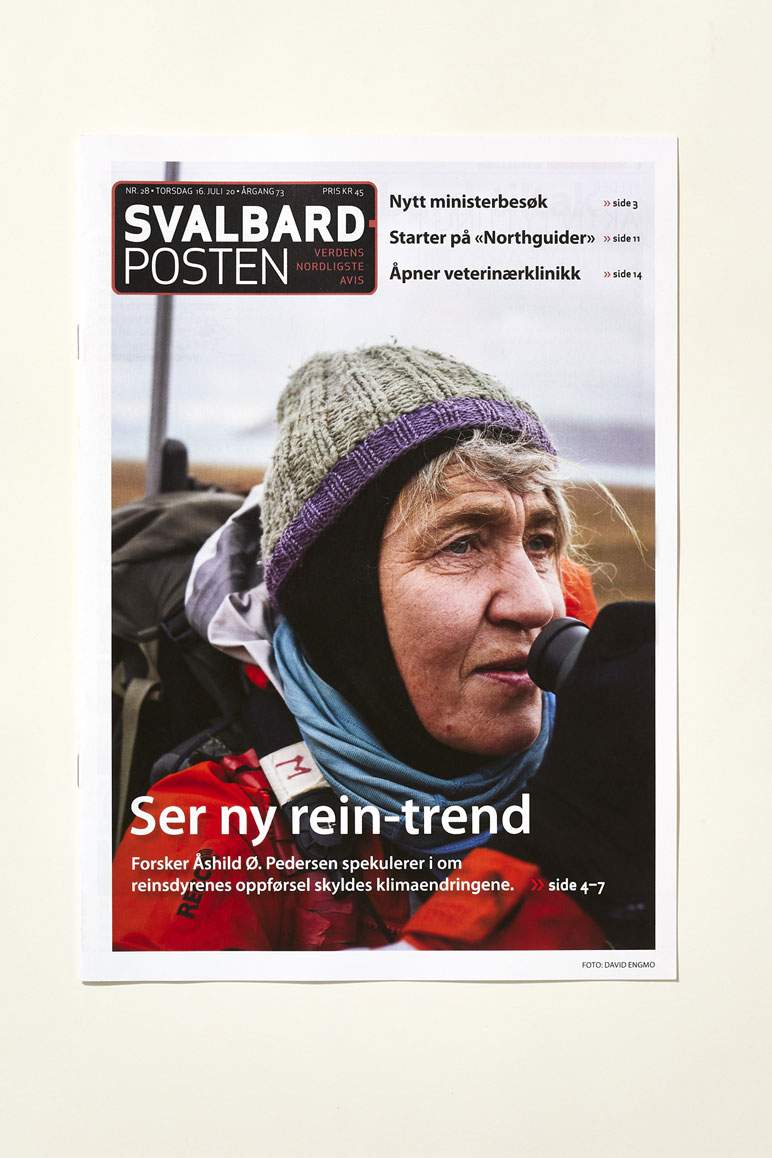
2.
‘Svalbardposten’
Svalbard, Norway
Editor: Hilde Røsvik
Journalists: Three
Founded: 1948
Cover price: NOK45 (€4)
Circulation: 2,100
Frequency: Weekly
Headquarters: Longyearbyen
At 08.00 every Thursday, Audun Bårdseth picks up the latest print run of the Svalbardposten from the post office. He drives the newspapers to a handful of sales points, includ- ing the single general store in his town of Longyearbyen, while listening to nrk, Norway’s national broadcaster, on the radio. Although Bårdseth’s delivery run might sound typical for a small town, the location of Longyearbyen is anything but. Nestled within Svalbard, an archipelago within the Arctic Circle, it is the closest town to the North Pole. Run de facto by Norway (although 42 different nationalities can live and work there visa-free), its 2,400 citizens are accustomed to more than 100 days of darkness through the winter. And the polar bears, totalling 3,000 throughout Svalbard, outnumber them.
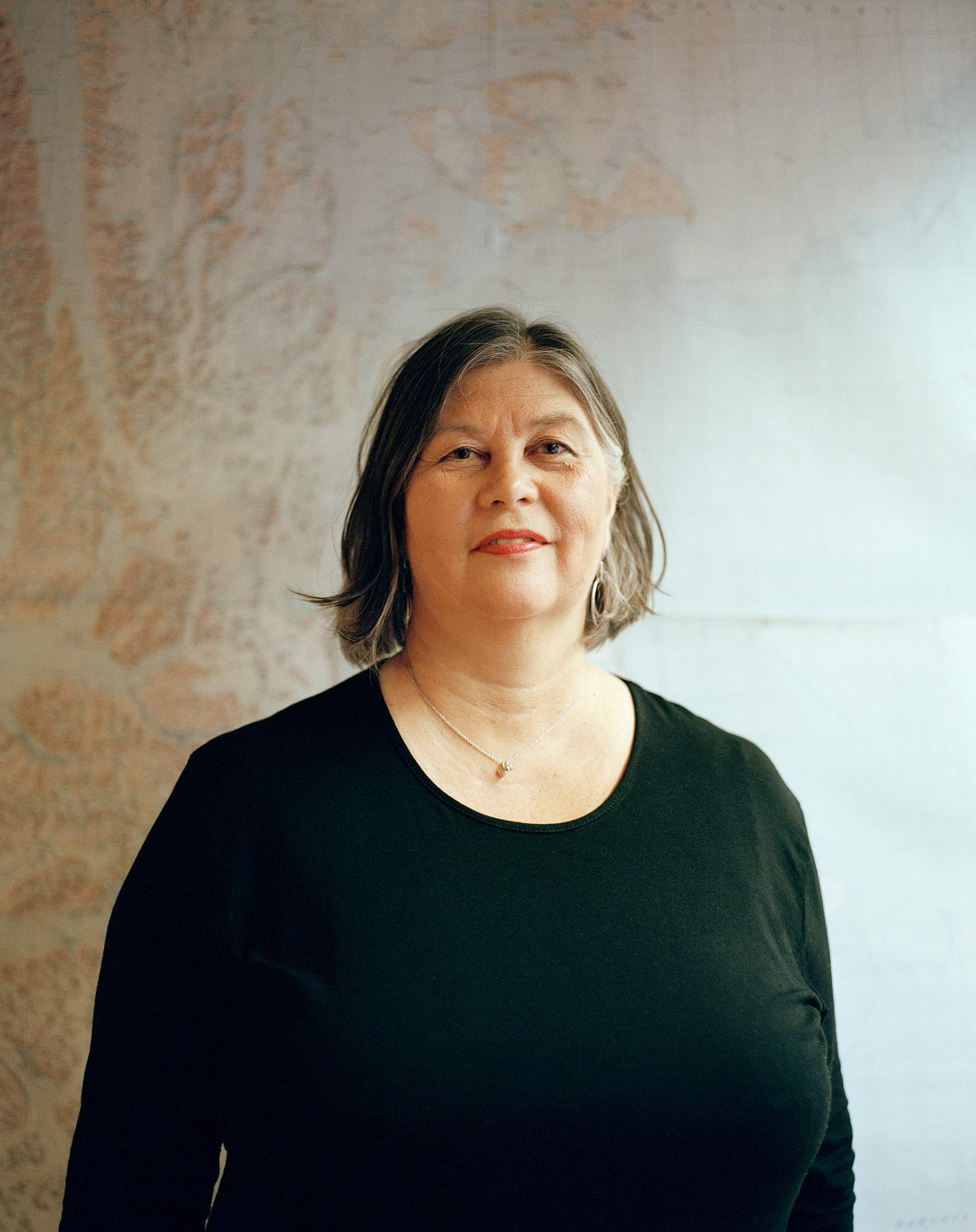

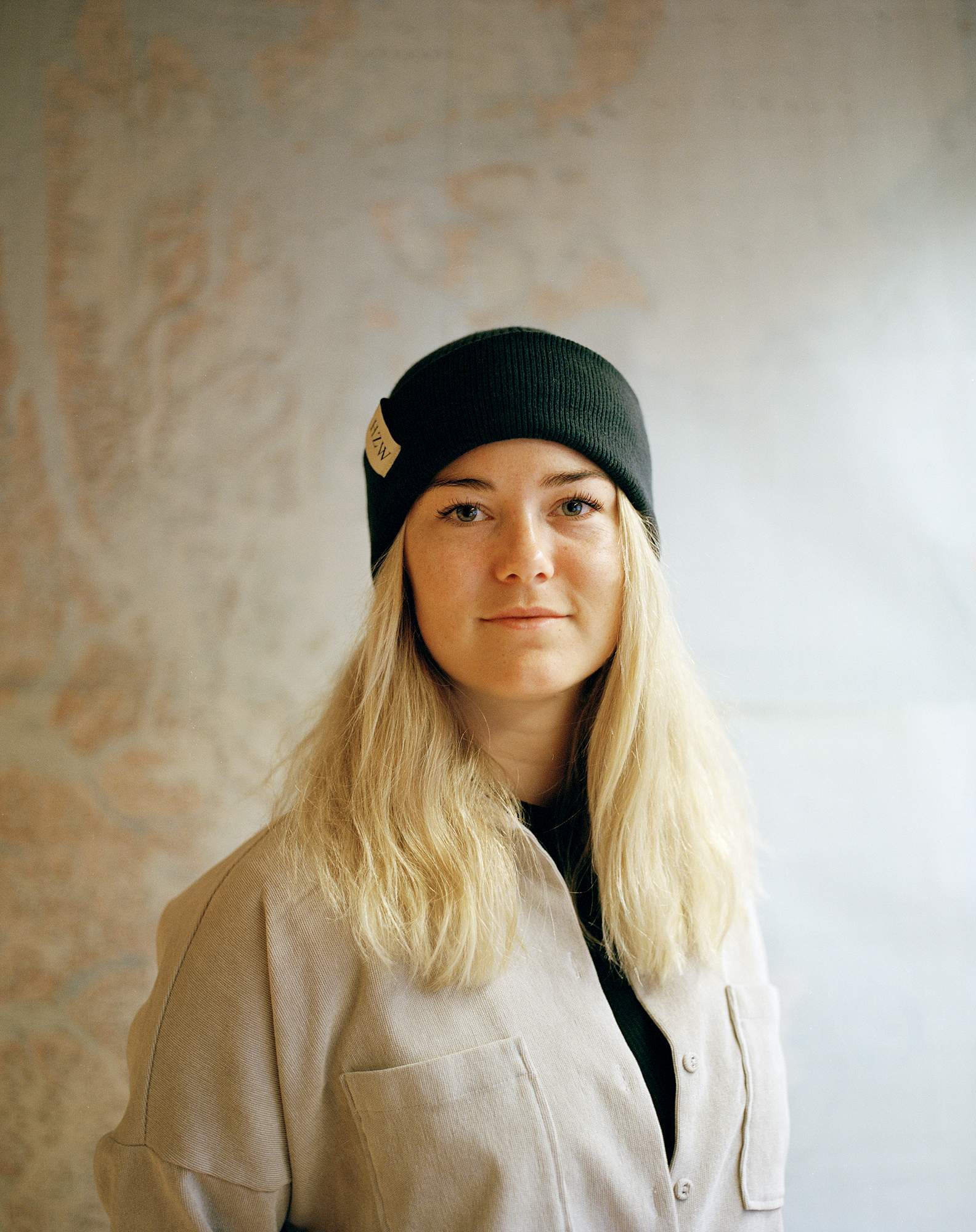

Nor is Bårdseth an ordinary deliveryman: he’s also one of the paper’s reporters. “We take the delivery run in turns,” he says. The Svalbardposten, with limited resources, needs its journalists to juggle multiple roles, including photo- graphing the stories they report. From behind the wheel of the company’s 20-year-old Toyota Rav4, currently clocking more than 100,000km, Bårdseth pulls into his first drop-off point: the world’s northernmost petrol station.

When Bårdseth returns to the office, he leaves his shoes at the door, as is custom in snowy Svalbard. Then the daily briefing begins. Today’s starts with a review of the current issue, laid open on an image of the Svalbardposten team, which was taken for a story that makes editor in chief Hilde Røsvik smile. Although the pandemic has led to a drop in advertising revenue that caused a nok500,000 (€45,700) shortfall for the paper, it prints news of a record rise in online readers, and not just from Svalbard: the paper is popular with politicians in the Norwegian parliament too.




“We have the whole world’s eyes on us,” says Røsvik, who for years served as a news editor for nrk and other mainland newspapers. She says that she’s never had ministers and state departments reply to her so quickly. The geopolitics of the region keep global decision-makers on their toes, with Russian mining bases and international scientific projects gaining their attention. And climate change is never far from the paper’s beat. The Svalbardposten has been covering the construction of giant avalanche barriers around Longyearbyen, used to defend against the increasingly frequent snowslides. Melting hunting grounds have also brought polar bears (regular headline-makers) closer to town.

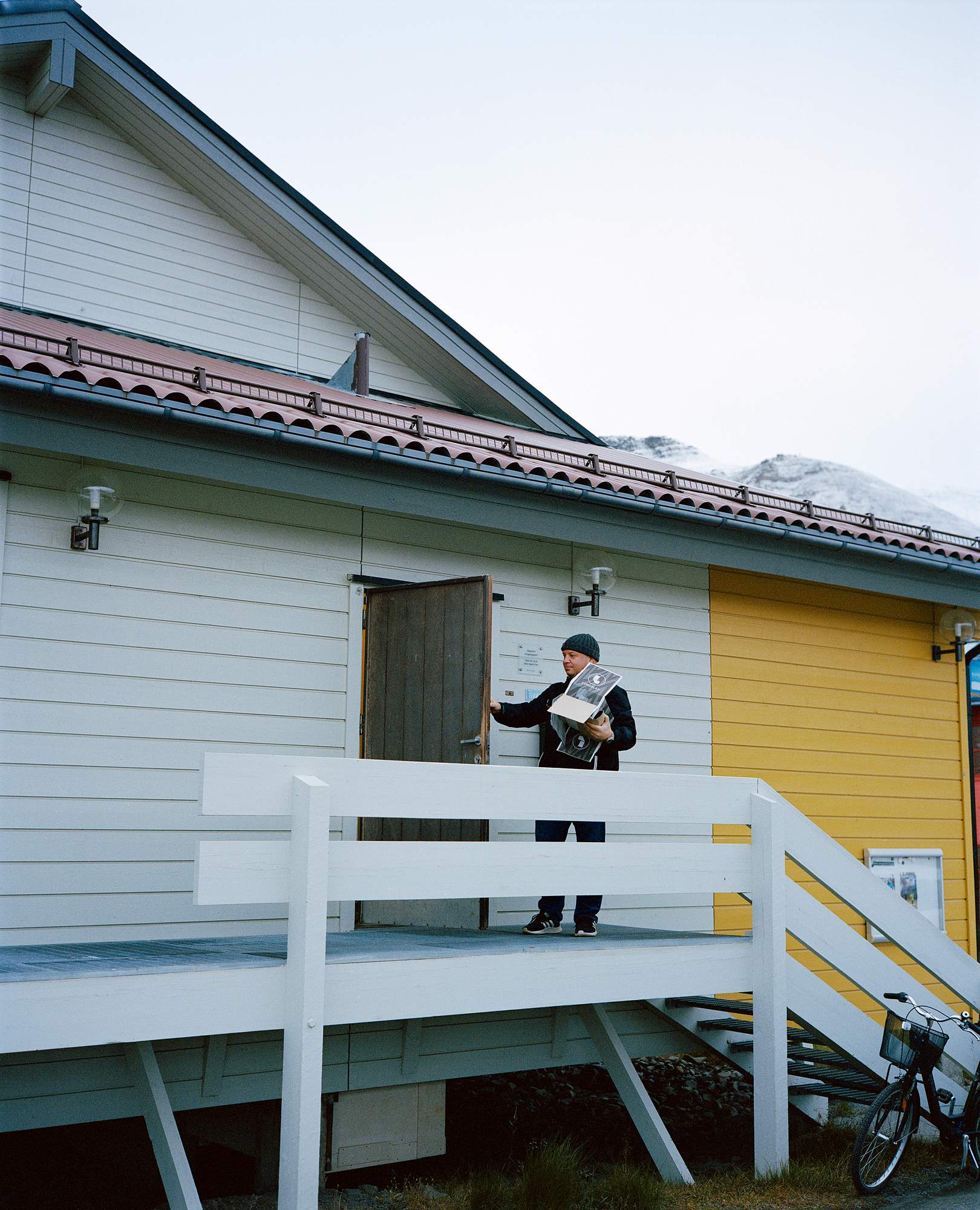
Røsvik is soon finishing her four-year contract as editor. For brave souls who might wish to fill her shoes, the position comes with a furnished apartment, a car and a rifle, required on any excursions beyond the town’s small, bear-protected area. As her reporter Bårdseth puts it, Svalbardposten is run with the seriousness of a regular news- paper, with a dose of adventure thrown in. But perhaps most importantly, the newssheet maintains a line between the settlement and the outside world. “It’s little, but betydningsfull [meaningful],” says Røsvik of Longyearbyen. It’s an apt description of the Svalbardposten too.
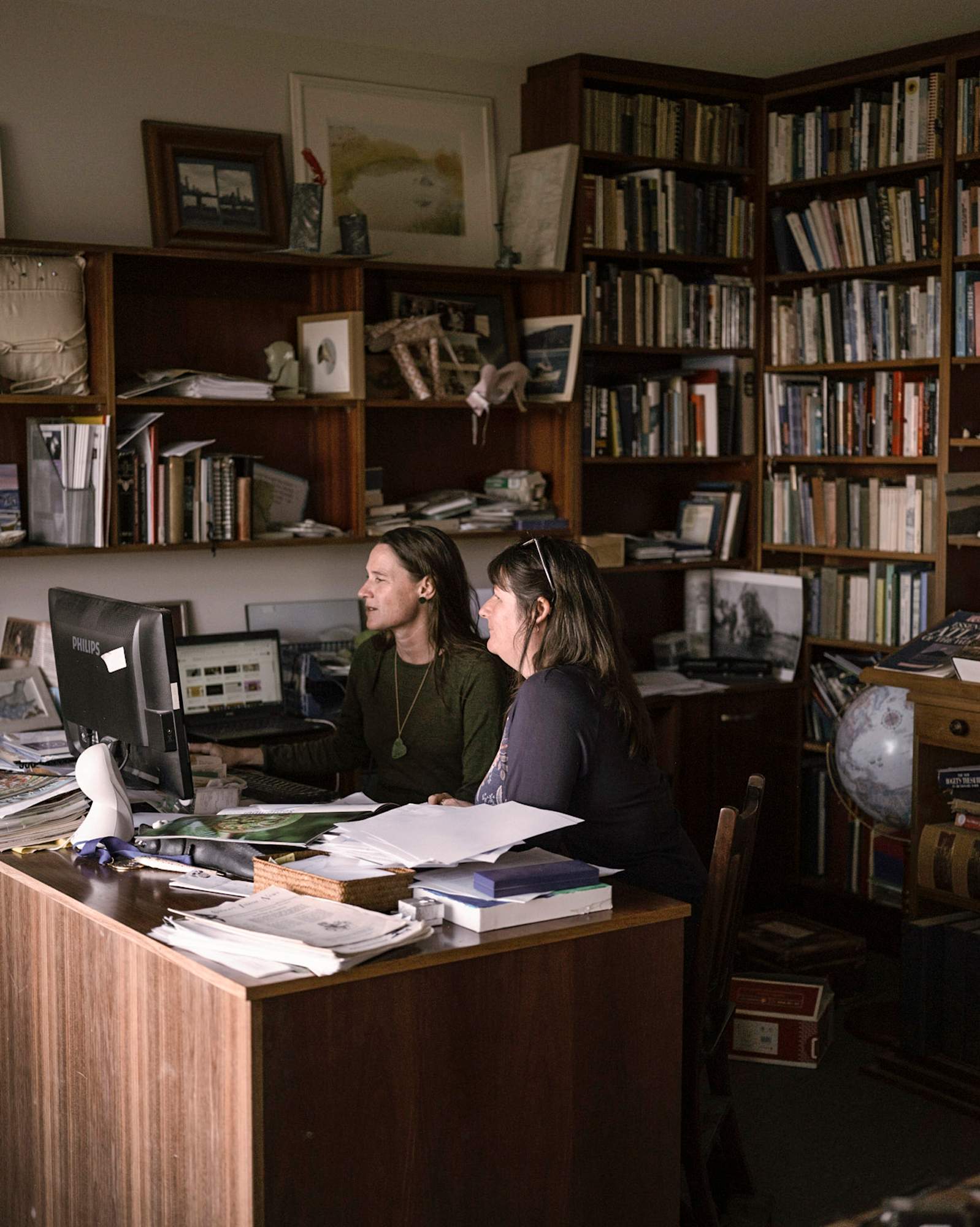
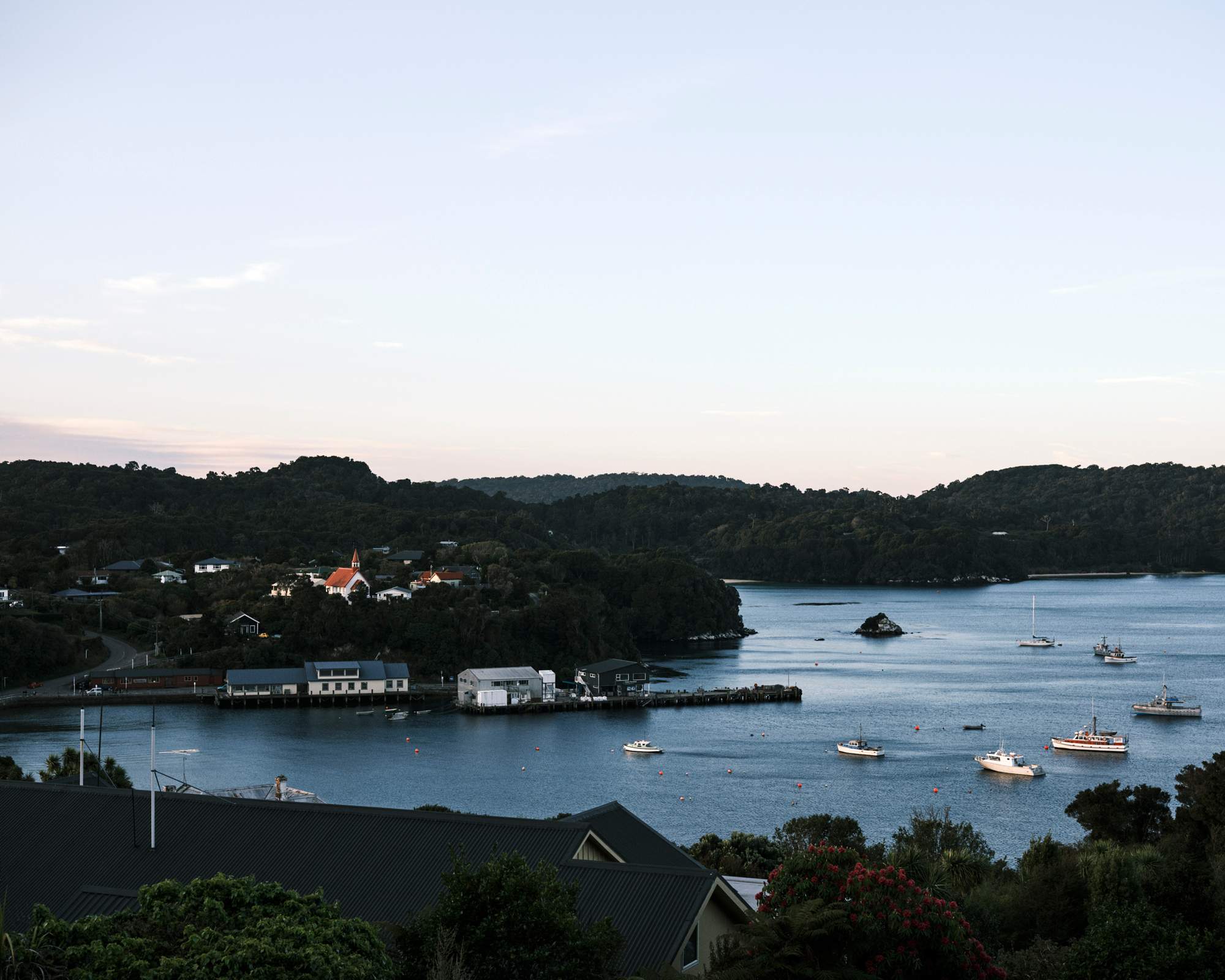
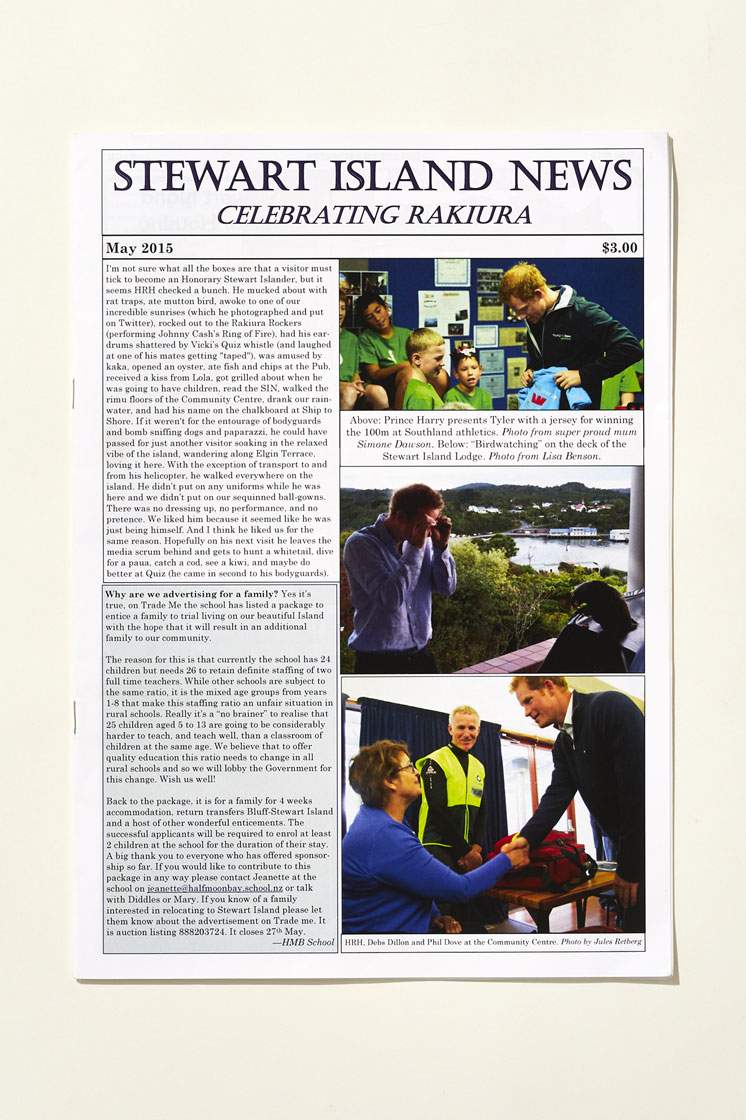
3.
‘Stewart Island News’
Oban, New Zealand
Editors: Jessica Kany and Shona Sangster
Journalists: Two
Founded: 1987
Cover price: nz$4 (€2.20)
Circulation: 300
Frequency: Monthly
Headquarters: Oban
It’s not unusual to spot a kiwi, New Zealand’s endangered national icon, on your way home from Stewart Island’s only pub. You might also meet a sea lion. The island (also known by its Maori name, Rakiura) is home to just 400 people, who live in New Zealand’s southernmost settle- ment, Oban. Most of its forested reaches are accessible only by boat or foot, via snaking rivers and muddy tracks. Jess Kany, a human dynamo from New York, arrived in 2002, fell in love with a crayfisherman and never left. She also fell in love with the island’s community newsletter, Stewart Island News (affectionately known as “Sin”). She describes it as a monthly treat “to be devoured at leisure in the bath” and became its editor in 2005.
Sin is a juicy forum for anything Stewart Island- related. The effects of inbreeding in wild bird populations, for instance. Kany draws the line at poison pen letters, religious rants and “ludicrous conspiracy theories”. Musings from island characters and offers to buy ambergris (valuable sperm-whale vomit that washes up on Stewart Island beaches and is used in perfumes) pepper Sin’s pages.
Kany’s co-editor is the indomitable Shona Sangster, who was lured from Auckland in 2015 by her partner, a fifth-generation islander who works on oil rigs and devises Sin’s crossword. The island is home to lots of such love migrants, as well as fishermen, water-taxi drivers, abalone divers and those seeking the slower-paced New Zealand of yore. It has a population of ecologists too, who manage the unique wildlife. Indeed, predator control is well covered by the paper: Kany has a column dubbed “Snap Chat”, carrying dispatches from the war on rodents. She patrols a string of traps, using a butter knife – her “rat scraper” – to check them. “Ratting” is not for the squeamish: “We call them ‘dancers’ when the skin’s intact but they’re loaded with maggots,” says Kany with a glint in her eye.
Sin covers contentious issues too. A nearby shark- cage diving enterprise is a sore point, as was exploratory offshore gas drilling. Kany sees it as her duty to provide balanced commentary but this can be tough when she runs into both sides of debates at the shop. “You just have to maintain a sense of humour,” she says. Muttonbirds, though, unite Stewart Islanders. The fat chicks, which smell like fish and look like tiny sheep with beaks, are a delicacy. Sangster says that they taste like venison wrapped in anchovies. Kany claims they’re meat candy.
Surf’n’turf is another highlight. Residents shoot deer from their decks, tucking into fresh venison, abalone and crayfish for dinner. When Kany arrived on Stewart Island, she thought the deer on her lawn were “kind of delightful” but quickly discovered that they didn’t play nice with the flowerbeds. That said, when she met her husband, he had a deer living in his yard named Stroppy. “Stroppy made this noise of deep pleasure when eating strawberries,” she says. “I had my mum in New York listen to it over the phone and I remember her saying, ‘Well, now I’ve heard it all.’” Stroppy died of natural causes in June 2012; its obituary ran over two pages in the Stewart Island News.


